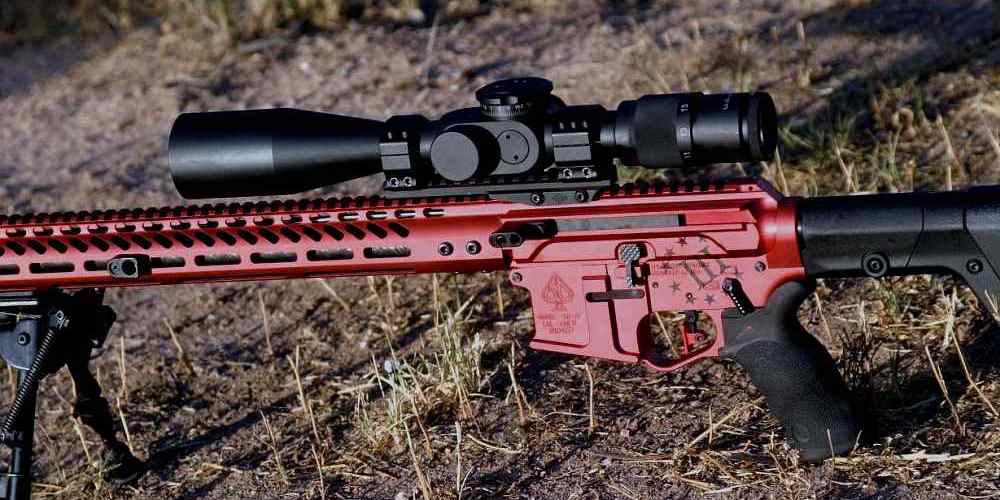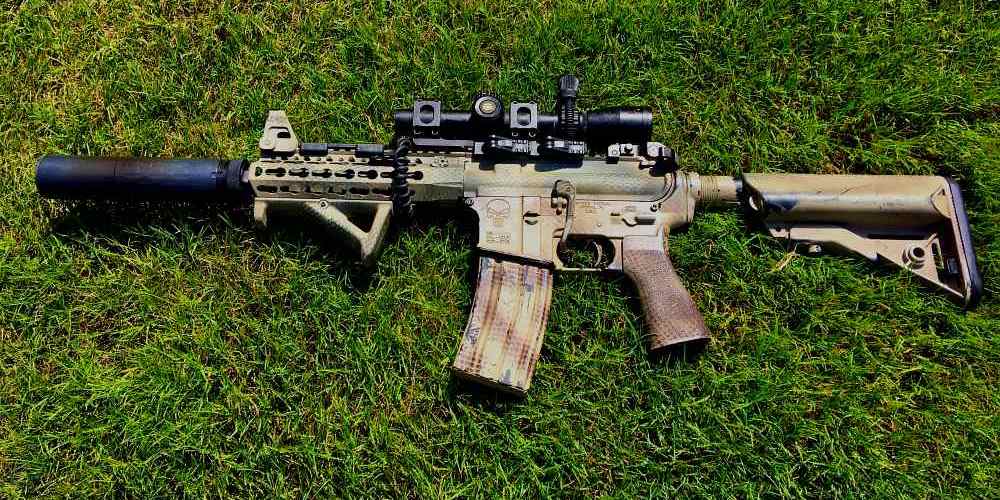“Customize your AR15 with precision and style.”
Different Types of AR15 Rails and Handguards
When it comes to customizing your AR15, one of the most important decisions you’ll make is choosing the right rail system and handguard. These components not only affect the look of your rifle but also play a crucial role in its functionality and performance. With so many options available on the market, navigating the world of AR15 rails and handguards can be overwhelming. In this article, we’ll break down the different types of AR15 rails and handguards to help you make an informed decision for your custom build.
One of the most popular choices for AR15 rails is the Picatinny rail system. This type of rail features a series of evenly spaced slots that allow you to easily attach accessories such as scopes, lights, and grips. The Picatinny rail is known for its versatility and compatibility with a wide range of accessories, making it a favorite among shooters who like to customize their rifles. If you’re looking for a rail system that offers maximum flexibility, the Picatinny rail is a solid choice.
Another option to consider is the KeyMod rail system. KeyMod rails feature a series of keyhole-shaped slots that allow you to attach accessories using special KeyMod nuts and screws. This system offers a sleek and lightweight design, making it a popular choice for shooters who prioritize weight savings and a clean aesthetic. KeyMod rails are also known for their ease of installation, as accessories can be quickly attached and removed without the need for tools. If you’re looking for a minimalist and user-friendly rail system, KeyMod might be the right choice for your custom build.
M-Lok is another popular rail system that has gained traction in recent years. Similar to KeyMod, M-Lok rails feature a series of slots that allow you to attach accessories using M-Lok nuts and screws. M-Lok rails offer a low-profile design that reduces weight and bulk, making them a great option for shooters who value a streamlined look. M-Lok rails are also known for their durability and strength, making them a reliable choice for demanding shooting environments. If you’re looking for a modern and versatile rail system, M-Lok might be the perfect fit for your custom AR15 build.
In addition to rail systems, handguards are another important component to consider when customizing your AR15. Handguards not only protect your hands from the heat generated by the barrel but also provide a mounting platform for accessories. When choosing a handguard, it’s important to consider factors such as weight, length, and compatibility with your chosen rail system. Whether you prefer a traditional round handguard or a more modern free-floating design, there are plenty of options available to suit your needs and preferences.
Ultimately, the best rail system and handguard for your custom AR15 build will depend on your personal preferences and shooting style. Whether you prioritize versatility, weight savings, or durability, there’s a rail system and handguard out there to meet your needs. By understanding the different types of AR15 rails and handguards available, you can make an informed decision that will enhance the performance and aesthetics of your rifle. So take your time, do your research, and choose the components that will help you build the AR15 of your dreams.
Choosing the Right Rail Length for Your AR15 Build
When it comes to customizing your AR15, one of the most important decisions you’ll need to make is choosing the right rail length for your build. The rail length you choose will not only affect the overall look of your rifle but also impact its functionality and performance. In this article, we’ll explore the different rail lengths available for AR15s and help you navigate the world of AR15 rails and handguards in custom builds.
One of the most popular rail lengths for AR15s is the carbine-length rail, which typically measures around 7 inches. This length is a great option for those looking for a compact and lightweight setup, perfect for close-quarters combat or tactical applications. The carbine-length rail provides enough space for accessories like lights, lasers, and grips, without adding unnecessary bulk to your rifle.

If you’re looking for a bit more real estate on your rifle, consider a mid-length rail, which typically measures around 9 inches. The mid-length rail offers a good balance between compactness and versatility, providing enough space for additional accessories while still maintaining a sleek and streamlined profile. This length is a popular choice for those looking for a do-it-all rail that can handle a variety of shooting scenarios.
For those who prefer a longer rail, the rifle-length rail is a great option. Measuring around 12 inches, the rifle-length rail offers plenty of space for mounting a wide range of accessories, from optics and magnifiers to bipods and foregrips. This length is ideal for those who prioritize customization and want to maximize the functionality of their AR15.
When choosing the right rail length for your AR15 build, it’s important to consider your shooting style and intended use for the rifle. If you plan on using your AR15 for close-quarters combat or home defense, a shorter rail length like the carbine-length may be more suitable. On the other hand, if you’re a long-range shooter or hunter, a longer rail length like the rifle-length may be a better fit.
It’s also important to consider the weight and balance of your rifle when choosing a rail length. A longer rail will add more weight to your rifle, which can affect its handling and maneuverability. If you prefer a lightweight setup, a shorter rail length may be the way to go. However, if you prioritize functionality and customization, a longer rail length may be worth the added weight.
Ultimately, the right rail length for your AR15 build will depend on your personal preferences and shooting needs. Whether you opt for a carbine-length, mid-length, or rifle-length rail, make sure to choose a high-quality rail from a reputable manufacturer to ensure durability and reliability. With the right rail length, you can customize your AR15 to suit your individual style and take your shooting experience to the next level.
Customizing Your AR15 Handguard for Optimal Performance
When it comes to customizing your AR15, one of the most important components to consider is the handguard. The handguard plays a crucial role in not only protecting your hands from the heat generated by the barrel but also in providing a platform for mounting accessories such as lights, lasers, and grips. With so many options available on the market, navigating the world of AR15 rails and handguards can be overwhelming. In this article, we will break down the different types of handguards available and provide some tips on how to choose the right one for your custom build.
One of the first decisions you will need to make when selecting a handguard is whether you want a free-floating or drop-in design. Free-floating handguards are attached to the barrel nut and do not come into contact with the barrel itself. This design can help improve accuracy by reducing the amount of pressure on the barrel caused by the handguard. Drop-in handguards, on the other hand, are attached directly to the upper receiver and typically require the removal of the front sight post. While drop-in handguards are easier to install, they may not offer the same level of accuracy as free-floating handguards.
Once you have decided on the type of handguard you want, the next step is to choose a rail system. Rail systems come in a variety of lengths and configurations, with the most common being Picatinny and M-LOK. Picatinny rails feature a series of raised ridges that allow for the attachment of accessories using a standard mounting system. M-LOK rails, on the other hand, feature a series of slots that allow for the attachment of accessories using T-nuts. M-LOK rails are generally lighter and more streamlined than Picatinny rails, making them a popular choice for those looking to reduce weight and bulk on their AR15.
When selecting a rail system, it is important to consider the length of the handguard and the placement of accessories. Longer handguards provide more real estate for mounting accessories but can add weight and bulk to your rifle. Shorter handguards, on the other hand, are lighter and more compact but may limit the number of accessories you can mount. It is also important to consider the placement of accessories on the rail system. Placing accessories too far forward or too far back can affect the balance and handling of your rifle.
In addition to rail systems, handguards also come in a variety of materials, including aluminum, polymer, and carbon fiber. Aluminum handguards are durable and provide excellent heat dissipation but can be heavy. Polymer handguards are lightweight and affordable but may not be as durable as aluminum. Carbon fiber handguards are lightweight and strong but can be expensive. When choosing a material for your handguard, consider your budget and intended use for your rifle.
In conclusion, customizing your AR15 handguard is an important step in building a rifle that meets your needs and preferences. By considering factors such as handguard type, rail system, length, material, and accessory placement, you can create a custom build that is both functional and aesthetically pleasing. Whether you are a seasoned shooter or a novice builder, taking the time to research and select the right handguard for your AR15 will ensure optimal performance and satisfaction with your custom build.
Installing and Maintaining AR15 Rails and Handguards
When it comes to customizing your AR15, one of the most popular upgrades is adding rails and handguards. These components not only enhance the look of your rifle but also provide added functionality and versatility. With so many options available on the market, navigating the world of AR15 rails and handguards can be overwhelming. In this article, we will break down the different types of rails and handguards, as well as provide tips for installing and maintaining them.
One of the first decisions you will need to make when choosing rails and handguards for your AR15 is whether you want a free-floating or drop-in design. Free-floating handguards are attached to the barrel nut and do not come into contact with the barrel, which can improve accuracy by reducing barrel harmonics. Drop-in handguards, on the other hand, are easier to install and typically less expensive. Consider your shooting style and preferences when deciding which design is right for you.
Next, you will need to choose the material for your rails and handguards. Aluminum is a popular choice due to its lightweight and durable properties. Carbon fiber is another lightweight option that provides excellent heat resistance. Polymer handguards are also available and are a budget-friendly choice. Consider the weight, durability, and heat resistance of each material before making your selection.
Once you have chosen the type and material of your rails and handguards, it is time to install them on your AR15. Before beginning the installation process, ensure that your rifle is unloaded and the safety is engaged. Follow the manufacturer’s instructions carefully to ensure a proper fit. Use the appropriate tools and take your time to avoid damaging your rifle or components.
When installing rails and handguards, pay attention to the alignment and fit of the components. Proper alignment is crucial for optimal performance and accuracy. Check for any gaps or misalignments and make adjustments as needed. Tighten all screws and bolts securely to prevent any movement or shifting during use.
After installing your rails and handguards, it is important to regularly maintain and clean them to ensure they function properly. Use a mild detergent and water to clean off any dirt or debris that may accumulate during use. Avoid using harsh chemicals or solvents that can damage the finish of your components. Inspect your rails and handguards regularly for any signs of wear or damage and replace them if necessary.
In conclusion, navigating the world of AR15 rails and handguards in custom builds can be a daunting task. Consider the type, material, and installation process when choosing components for your rifle. Take your time during installation and maintenance to ensure optimal performance and longevity. With the right rails and handguards, you can customize your AR15 to fit your shooting style and preferences.
Upgrading Your AR15 Rails and Handguards for Improved Functionality
When it comes to customizing your AR15, one of the most popular upgrades is swapping out the stock rails and handguards for something more functional and aesthetically pleasing. With so many options on the market, it can be overwhelming to navigate the world of AR15 rails and handguards. In this article, we will break down the different types of rails and handguards available, as well as provide some tips for choosing the right one for your custom build.
One of the first decisions you will need to make when upgrading your AR15 rails and handguards is whether you want a free-floating or drop-in design. Free-floating rails and handguards are mounted directly to the upper receiver, allowing for increased accuracy and better heat dissipation. Drop-in handguards, on the other hand, are easier to install and typically less expensive, but may not offer the same level of performance as free-floating options.
Once you have decided on the type of rail or handguard you want, the next step is to choose a material. Aluminum is a popular choice for AR15 rails and handguards due to its lightweight and durable nature. However, there are also options available in polymer and carbon fiber for those looking for something different. Consider your intended use for the rifle when selecting a material, as each has its own advantages and disadvantages.
Another important factor to consider when choosing AR15 rails and handguards is the length. Rails and handguards come in a variety of lengths, from carbine-length to rifle-length, and everything in between. The length you choose will depend on your personal preference and the accessories you plan to mount on your rifle. Longer rails and handguards provide more real estate for accessories such as lights, lasers, and grips, while shorter options are more compact and lightweight.
When selecting AR15 rails and handguards, it is also important to consider the mounting system. KeyMod and M-LOK are two popular mounting systems that allow for easy attachment of accessories without the need for bulky rail sections. KeyMod features keyhole-shaped mounting slots, while M-LOK uses a series of T-shaped slots. Both systems are lightweight and provide a secure mounting platform for accessories.
In addition to the mounting system, you will also want to consider the profile of the rail or handguard. Slim-profile rails and handguards are popular for those looking to reduce weight and improve ergonomics, while quad-rail designs offer more attachment points for accessories. Consider your intended use for the rifle when selecting a profile, as each has its own advantages and disadvantages.
When upgrading your AR15 rails and handguards, it is important to choose a reputable manufacturer. Look for companies with a proven track record of producing high-quality products that are built to last. Reading reviews and seeking recommendations from fellow gun enthusiasts can help you make an informed decision when selecting a rail or handguard for your custom build.
In conclusion, upgrading your AR15 rails and handguards can greatly improve the functionality and aesthetics of your rifle. With so many options available, it is important to consider factors such as type, material, length, mounting system, and profile when selecting a rail or handguard for your custom build. By taking the time to research and choose the right components, you can create a rifle that is tailored to your specific needs and preferences.



